LEAF VEIN
葉 脈
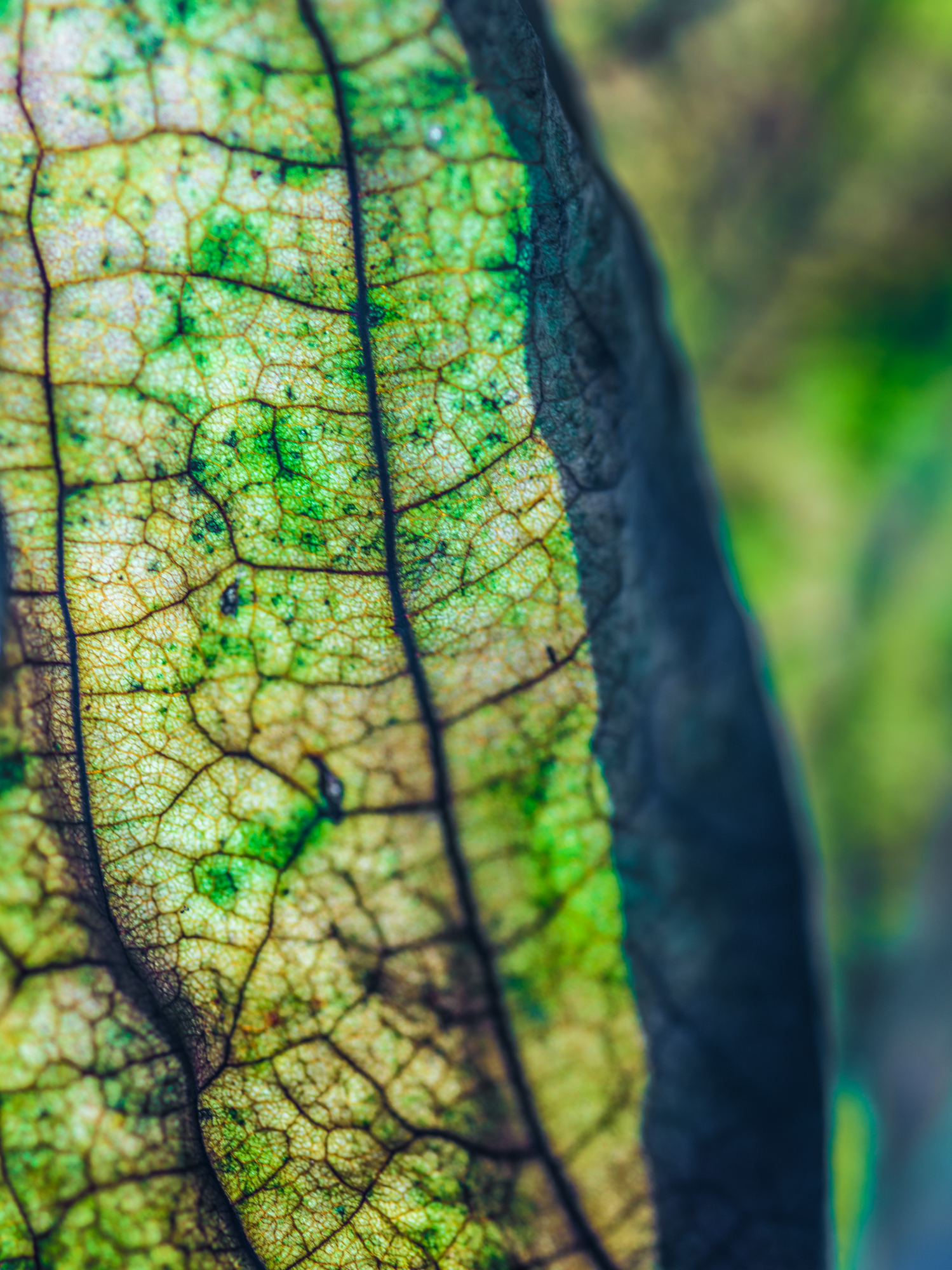
<LEAF VEIN に関して>
葉脈とは維管束が葉の中に入りこんだもの。その機能は物資運搬と葉の機械的支持にある。
植物の茎、根、葉の構造・仕組み・循環する様をマテリアル、衣服として具現化したコレクションである。
糸の選定、生地作り、洋服としての縫製、天然染色することで具現化している。
葉脈の網状脈をテーラードの刺繍テクニックであるハ刺しや、不規則なハンドステッチを駆使して部分的に手刺繍した。
<About LEAF VEIN>
A leaf vein is a vascular bundle found in leaves. This vascular bundle serves as a transport system for nutrients and water, and provides mechanical support.
This is a collection in which the structure and mechanism of, as well as circulation seen in the plants’ stem, roots and leaves are exemplified as fabric and clothing.
Attention is focused on the selection of threads, weaving of fabric, sewing of clothing, and natural dyeing.
Pieces are partially hand-embroidered to create netted veins of leaves using a tailored embroidery technique called pad stitching and irregular hand stitching.



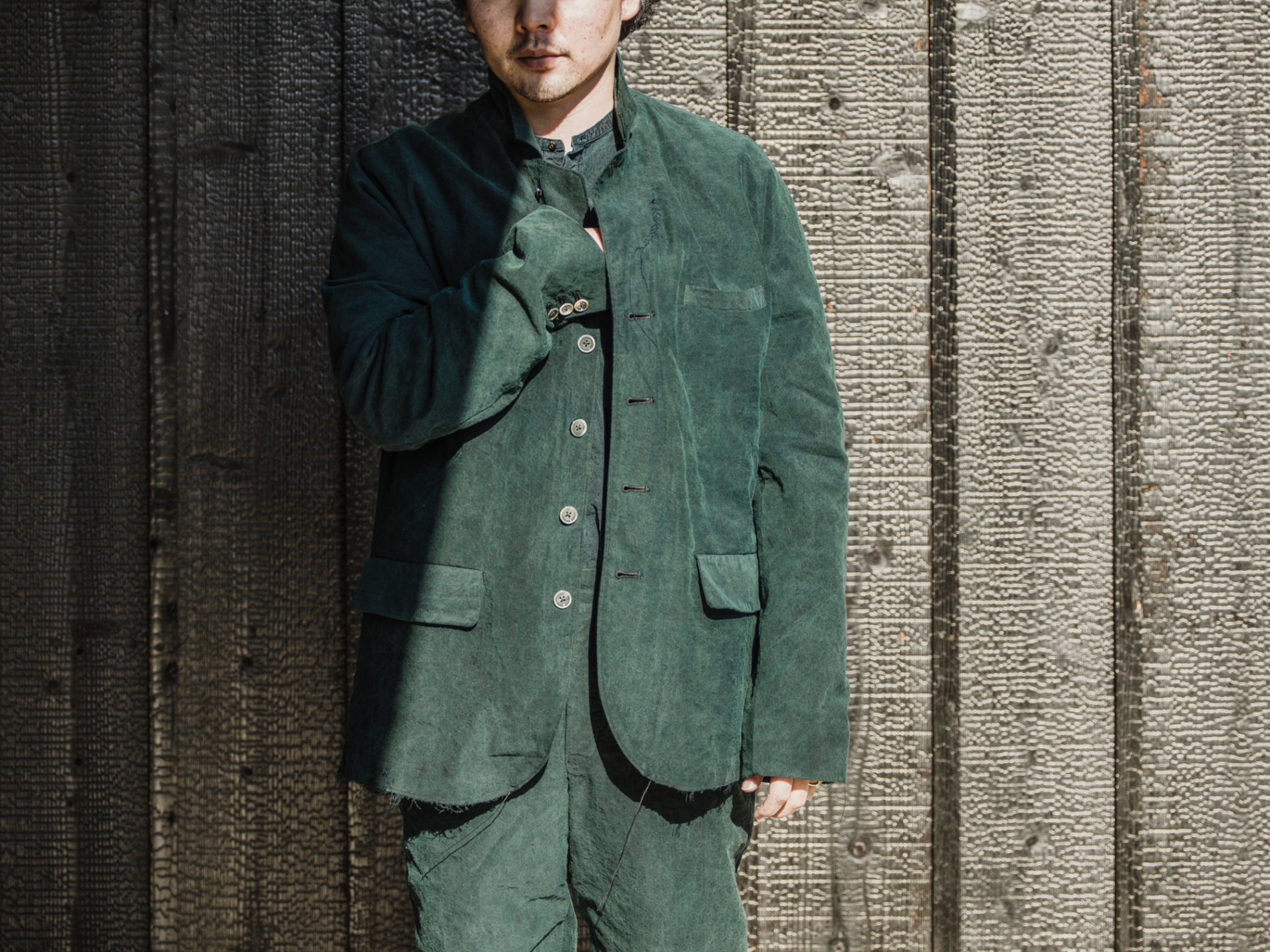
SenkohSuiuでは、このような生活の中にあるハッとした出会いや美しさを視覚と触覚で表現し、
工藝的な美術要素を取り入れる事でマテリアルとして具現化します。
線香(閃光)翠雨という造語。
線香-線香を焚てる時の故人との時を懐かしんだり、香の匂いがある間、心が研ぎ澄まされたり普段とは違う時間を味わう感覚を。
閃光-瞬間的に光る煌めきや儚さを。
翠雨-新緑に降り注ぐ雨のこと、青々とした葉の上に雨の雫がとまる様などの情景を意味する。
線香が終わると灰になってしまう言葉と、翠雨という瑞々しい言葉で対義語にすることで様々な循環を表している。
SenkohSuiu expresses these surprising encounters and beauty in ordinary life through the senses of sight and touch, and puts craft art elements into the material.
SenkoSuiu is a coined phrase of Senkoh and Suiu in Japanese.
Senkoh itself has two different meanings:
One is “incense,” indicating the act of missing and thinking of deceased persons, sharpening their own senses and enjoying an extraordinary time enveloped in the scent of burning incense;
The other is “flash,” standing for instantaneous glow and fragility.
Suiu is rain that pours down on fresh green leaves. It expresses raindrops staying on those leaves.
Antonyms of Senkoh and Suiu expresses various kinds of circulation, with the former serving as a reminiscent of incense which turns into ash in the end, and the latter having a fresh image.



・LEAF VEIN のマテリアルについて
「糸から織られる生地の極上は無地、その次に細かな格子と縞である」
日本の先人から機織りの人々の間に言い伝えられてきた言葉である。
無地にこそ誤魔化しの効かない本質が現れてしまう。
100年前の馬商コートのリネン生地に触れた時、光沢と高密度、しっとりとした肌感があった。
このような時が経っても「生もの感」のある無地生地を作るべく開発をスタートした。
* About the LEAF VEIN material
“The most sophisticated motif of fabric woven with threads is a plain pattern, which is followed by one with fine grids and stripes.
These words were handed down among Japanese weavers for many years.
Plain fabric shows true nature that cannot be disguised.
When I felt the linen cloth of a maquignon (=horse trader) coat made 100 years ago, I was impressed with its luster, high density and moist touch.
We started the project to create such a plain fabric with the “feel of rawness” that is not lost with the passage of time.

質感・肌触り・着心地・強度・染色した時の美しさ、求める条件のための素材のレシピは
今までの経験上、オーガニックコットン・シルク・ヘンプを合わせたものから試作を繰り返した。
結果として縦糸をしなやかなピュアシルク(生糸)21d/8 と アルティメイト・ピマ(有機超長綿)80/2を。
横糸にはハードマンズヘンプ(大麻)100/1を使用した。各素材のデメリットを補い合うための配合量、織組織にした。
アルティメイト・ピマは従来のオーガニックコットンとは一線を画す、繊維長が十分あり、強力も兼ね備えた特徴の綿花である。 寒暖差の大きい高地で栽培された綿花は繊維の中空率が高くハリとコシがあり風合いが非常に長く保たれる。従来のオーガニックコットンにありがちな着ていくうちにへたったり、硬くなったりすることの少ない品質保持、経年美化の特徴を持っている.
To decide on a recipe for material that fulfills conditions such as texture, touch, comfort, durability, beauty after dyeing, trials were repeated, starting with the combination of organic cotton, silk and hemp that we felt would produce the best result from our experience with fabric.
As a result, it was decided to use supple, pure silk (raw silk thread) 21d/8 and ultimate pima (organic extra-long staple cotton) 80/2 as the warp, and herdmans hemp 100/1 for the weft. We came up with a blend quantity and weave structure that compensate for disadvantages of each raw material.
Ultimate pima is different from conventional organic cotton in that it features both sufficient fiber length and strength.
Cotton grown at high altitudes with large differences in day and night temperatures has features of high fiber hollowness, giving tension and resilience which makes its texture maintained for a very long time.


ヘンプは高温多湿な日本の気候に適していると同時に生地に美しい節模様と張りを与えてくれる。
試作では縦糸に使ってみたが番手も太くシワになりやすく、張りが強すぎて体馴染みの悪い生地になってしまった。 より細い番手のヘンプを求めリネンのロールスロイスと称されるハードマンズ・ヘンプに行き着いたのだった。 ハードマンズ・ヘンプの中でもゴールドラベルがつく100番手を紡績した。
麻の中でもヘンプは細番手の紡績が難しい。 100番手をひける無農薬栽培の上質な原料は大変希少性が高く、素材の選定、撚糸技術を加えることは難しい。 紡績職人の高い能力とノウハウがあってこその銘品である。
特徴としては糸の毛羽が非常に少なく光沢があり、しなやかで軽い生地に仕上るのだ。 ハードマンズ・ヘンプを横糸に使用することで軽やかで張りがありつつも身体に馴染む生地となった。
Hemp is suited for the hot and humid climate of Japan, and it gives fabric a beautiful knot pattern and tension.
As a trial fabric, hemp was used for the warp, but because the count was low, it wrinkled easily and had a too-strong tension, which resulted in a fabric that was ill-fitting.
Seeking a higher count hemp, we decided on herdmans hemp, which is called the Rolls Royce of linen.
Among many options, 100-count gold labeled herdmans hemp was chosen.
As for hemp, different from linen and ramie, high-count ones are difficult to spin.
Outstanding pesticide-free cultivated raw material that can be spun at 100 count is extremely rare, and the selection of raw material and application of twisting technology require expertise.
The product was possible only with the high skills and know-how of spinning workers.
The fabric features extremely low thread fuzz, has luster, and is woven into supple and light fabric.
Using herdmans hemp for the weft resulted in light fabric with tension but also fits comfortably to the body.


ヘンプのデメリットであるひんやり感、冬寒いことを補うため吸水保湿性のあるシルクのタンパク質を合わせた。
シルクの光沢性、高貴な風合いに惹かれ、汎用性の高い絹紡糸ではなく光沢の強い長繊維である生糸(ピュアシルク)を選んだ。 生糸は和装(着物、帯等)の手織りで使用される糸で、今回のシャトル織り機で織ることは不可能と思われた。
織り機に常に職人が目視し、細い生糸が切れるたびに手作業でつないでいく、
この工程こそが手工芸と工業製品との融合であり、時間やコストがかかっても譲れない点である。
The disadvantage of hemp is its coolness. To compensate for the chilliness of the winter season, we combined protein of silk known for its water absorption and moisture retention.
Attracted by its luster and noble texture, not highly versatile spun silk but highly lustrous, long-fiber pure silk was chosen.
Pure silk is used for traditional Japanese hand-woven attire (kimono, obi, etc.), and was thought impossible to weave with the shuttle loom used this time.
Workers had to be on the constant lookout on the loom, and every time a thin silk thread broke, they had to string it together by hand.
This process is the fusion of handicraft and industrial production, and a process that cannot be compromised no matter how time-consuming and costly it may be.

できるかできないかわからなかったが 今までにない良い生地のできる予感がした。
市場を無視したような通常使えない最高峰の糸の組み合わせの機織りは、機織りの職人も私たちも胸躍る作業だった。
試作や工夫を繰り返し LEAF VEIN のマテリアルはこうして完成した。
Although unknown whether or not it could be done, we had a hunch that it would result in an outstanding fabric not seen before.
Machine weaving combining the highest-ranking threads that are not readily available and almost ignoring marketability was an exciting process for both weavers and us.
This is how repeated trial and error resulted in the LEAF VEIN material.


・染色について
C/#生成り-écru
素材そのものの色
染色、晒しのない無垢な色
C/#ファーメンテンション(発酵)ーfermentation
生成地に本藍染、ヴァーチャーインディゴ、茜をハンドペイントで染色した。
繊維に染み入る表情で、三原色、光の乱写、発酵していく様を表現している。
* About dye
C/# Écru
Color of the raw material
Pure color without dye or bleach
C/# Fermentation
Authentic indigo, virtual indigo and red dyes are hand-painted on the écru fabric.
It expresses the three primary colors, scattered light and fermentation processes through dye permeation into fibers.

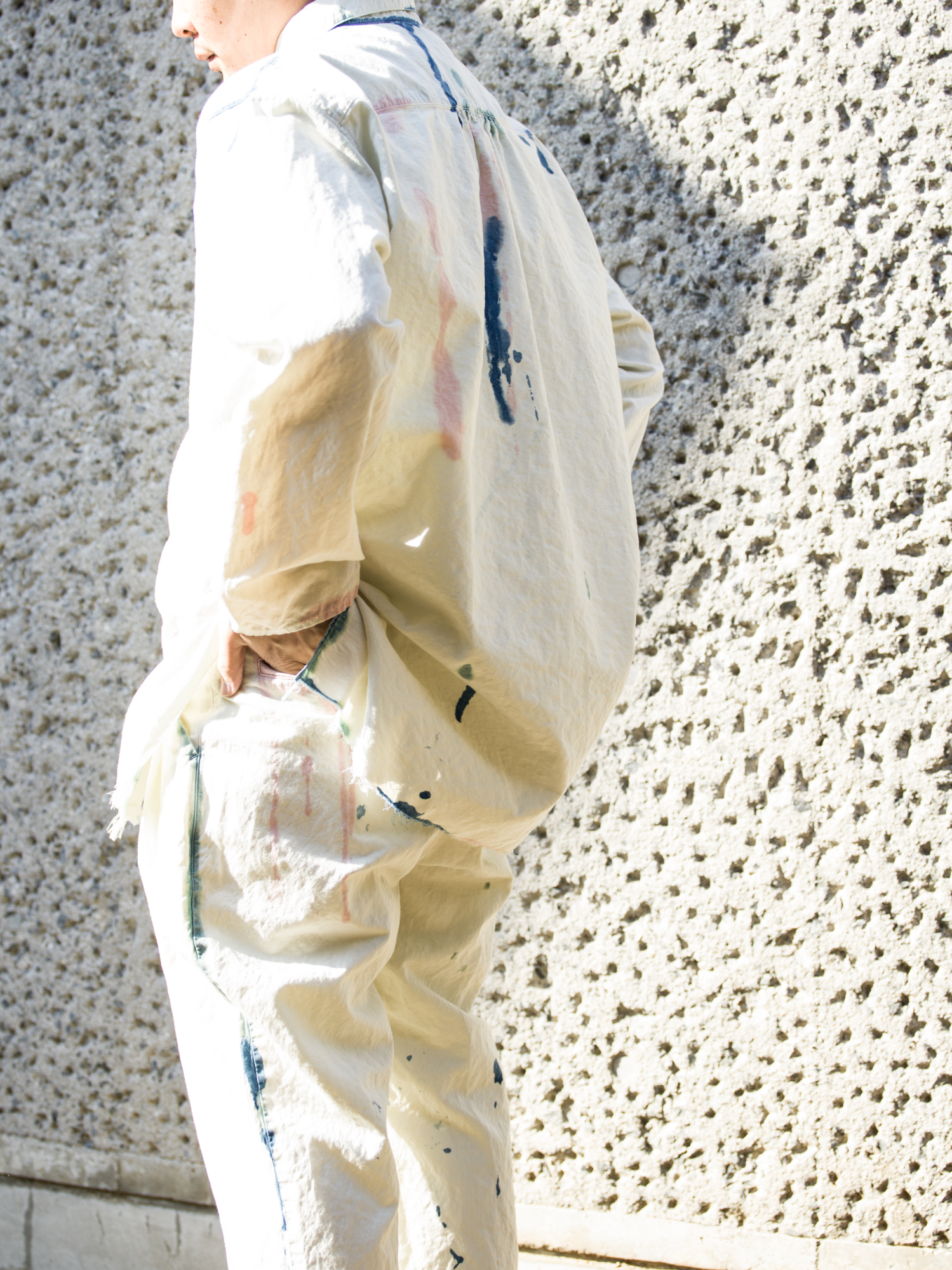
C/#ヴァーチャーインディゴ-verdure indigo
本藍とデッドストックインディゴのハイブリッド染
独自の技法で偶然性、実験的にうみだされた深緑。葉脈の色を表現している
C/# Verdure indigo
Hybrid dyeing of authentic indigo and dead stock indigo
Deep green that was accidentally and experimentally achieved with our unique technology. It expresses the color of a leaf vein.


C/#藍染-authentic indigo
藍染は繊維によって染色の濃淡により差が出る。
シルクは濃く染まり、綿は少し杢っぽく染まる、ヘンプは芯を残し髪の毛のような艶感に染る。
この3種が交わり葉脈のような表情が生地肌にあらわれる。
C/# Authentic indigo
Dyeing using authentic indigo produces more differences in color shades depending on the fiber applied.
Silk are dyed in deep colors, cotton in a slightly heather-tones, and hemp in hair-like lustrous hues leaving the core undyed.
The mixture of these three types of dyes results in a leaf vein-like pattern on the fabric surface.
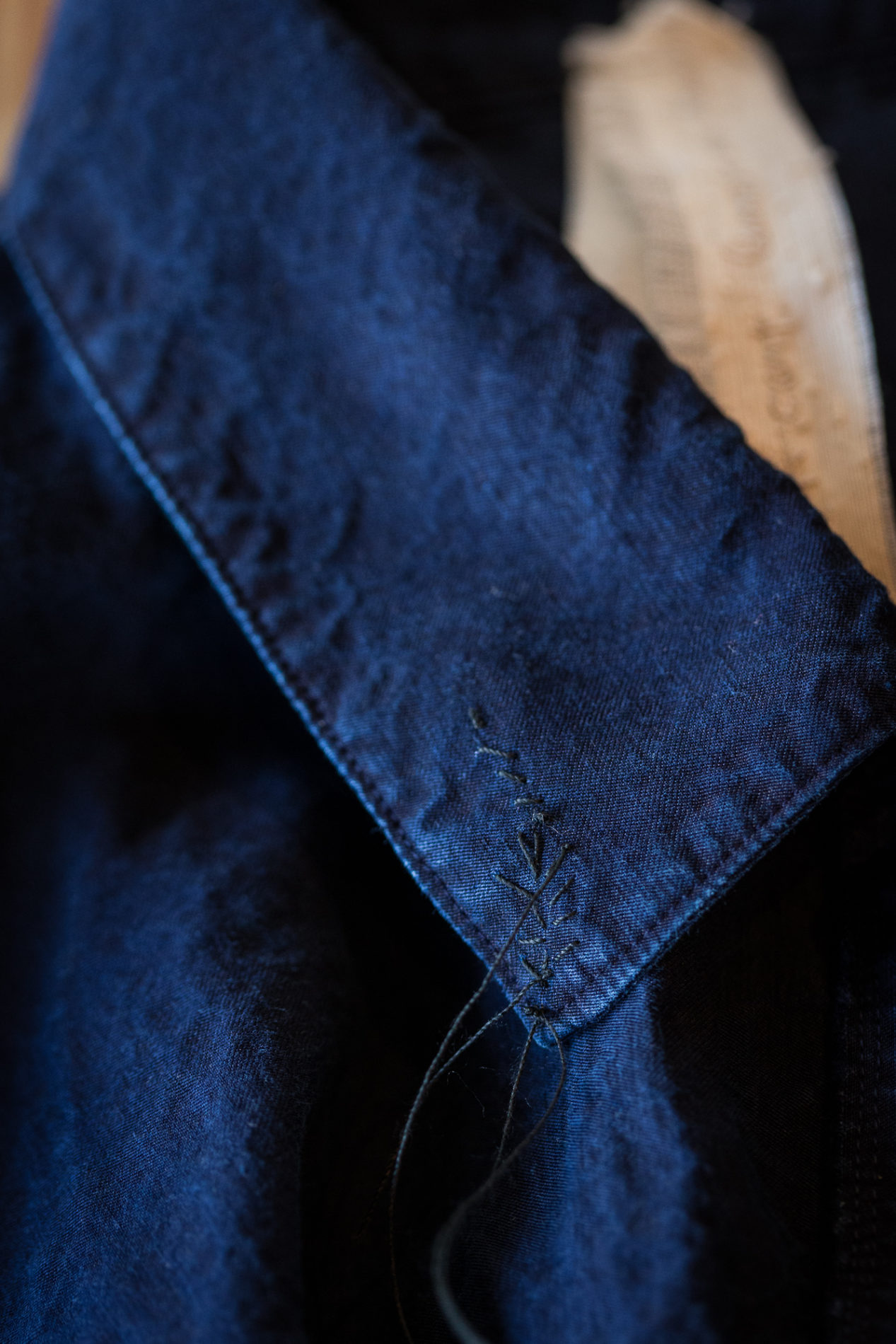
C/#柿渋媒染-kakishibu black
昔ならではの手法で柿汁を発酵させて出来た染料。
精製され無臭柿渋を使用している。 特有の顔料気質の表面を覆う硬さは着用するたびに体に沿って柔らかく馴染んでいく。
植物の土、幹を連想させる色味にするため媒染し、ダークトーンにした。
C/# Kakishibu black
A dye created by fermenting persimmon juice using an old-fashioned method.
Purified odorless persimmon tannin is used. The hardness covering the unique pigment temperament surface softly takes to the body as it is worn repeatedly.
It is mordanted to obtain a color associated with plant soil and trunk to give it a dark tone.

C/#本藍柿渋-authentic indigo+kakishibu
今回のサブテーマ、インフォーマルにかかせないブラック。
単純な反応染のブラックでは満足出来ず、
本藍染を濃く重ね、さらに柿渋を重ねる
色と色が重なり合い、着用していくとデニムのようなあたり感が期待できる。
とにかく時間と手間がかかる染色だが
SenkohSuiuのブラックができた。
C/# Authentic indigo + kakishibu
Black for informal attire, which is a subtheme for this line.
Unsatisfied with black from simple reaction dyeing, thick authentic indigo dyeing followed by persimmon tannin dyeing was repeated.
The colors overlap, giving it the feel of denim as you wear repeatedly.
SenkohSuiu black was achieved by this dyeing process that takes a huge amount of time and labor.

・Informal or formalについて
LEAF VEINのサブテーマとしてインフォーマルなスタイルの追求と提案があった。
特別な日に着る洋服。 着たことで日常に特別な影響を与える服でもあるように。
子供の参観日や初対面の方に会う時、自分を表すツールの一部として
共に歳を重ね、経年美化する服。長く愛用できるアイテムを目指している。
単体でも存在感がありつつも悪目立ちせず、
ジャケット/シャツ/パンツ。 コート/シャツ/パンツなどの
セットアップのコーディネートが楽しめるよう各アイテムを構成した。
アクセサリーとして首元にはスカーフ、ネクタイを製作した。
スカーフはシルク100%に手染めで柄をつけ、
手織りのネクタイは倉敷本染手織研究所の石上館長と当時の織模様を活かして、
現代的な寸法バランスにサイズ調節をおこない、着尺の絹糸と紬糸で手織りし製作した。
* About informal or formal
As a subtheme for LEAF VEIN, the proposal was made to pursue an informal style.
Clothing to wear on special days. Clothing that also gives an ordinary day a special meaning by wearing it.
On an open house at your child’s school, when meeting someone for the first time, as a tool to express yourself.
Growing old with clothing that becomes more beautiful over time. We aim to offer items that can be worn for a long time.
The line comes up with items that have presence as a single item, yet are not too conspicuous, and let you enjoy coordinating such as jacket/shirt/pants, or coat/shirt/pants.
We created scarves and neckties as accessories to wear around your neck.
They include hand-dyed patterned 100% silk scarves, as well as hand-woven neckties which were designed with the help of Director Ishigami of Kurashiki Dyeing, Spinning & Weaving Studio. The latter embraces the woven pattern seen in the past and hand-woven silk threads and unevenly spun tsumugi threads used in standard length materials for kimono, with the adjustment made to achieve a modern dimension balancing.



茎・根・葉をヘンプ・シルク・オーガニックコットンで再現し
植物が根から水を吸い上げ、全体に循環させていく様を
布の各繊維が染色液に染まっていく過程、風合いで表現している。
葉の光合成と同じく天然染色の行程中に太陽の光で色を定着させている。
仕立てはより軽やかに薄く、身体にまっとった時のシルエットにこだわったパターン製作をした。
– 混率 –
生糸30% 大麻37% 有機超長綿 33%
Stem, roots and leaves are reproduced with hemp, silk and organic cotton.
The image of a plant absorbing water from its roots and circulating throughout is expressed through textures and the process of coloring fibers of fabric with dye liquid.
In the same manner as photosynthesis occurring in leaves, the color is fixed with sunlight during the process of natural dyeing.
The pattern is created for tailoring focusing on light and a thin silhouette when worn.
– Material –
Pure Silk 30% Hemp 37% Organic Cotton 33%

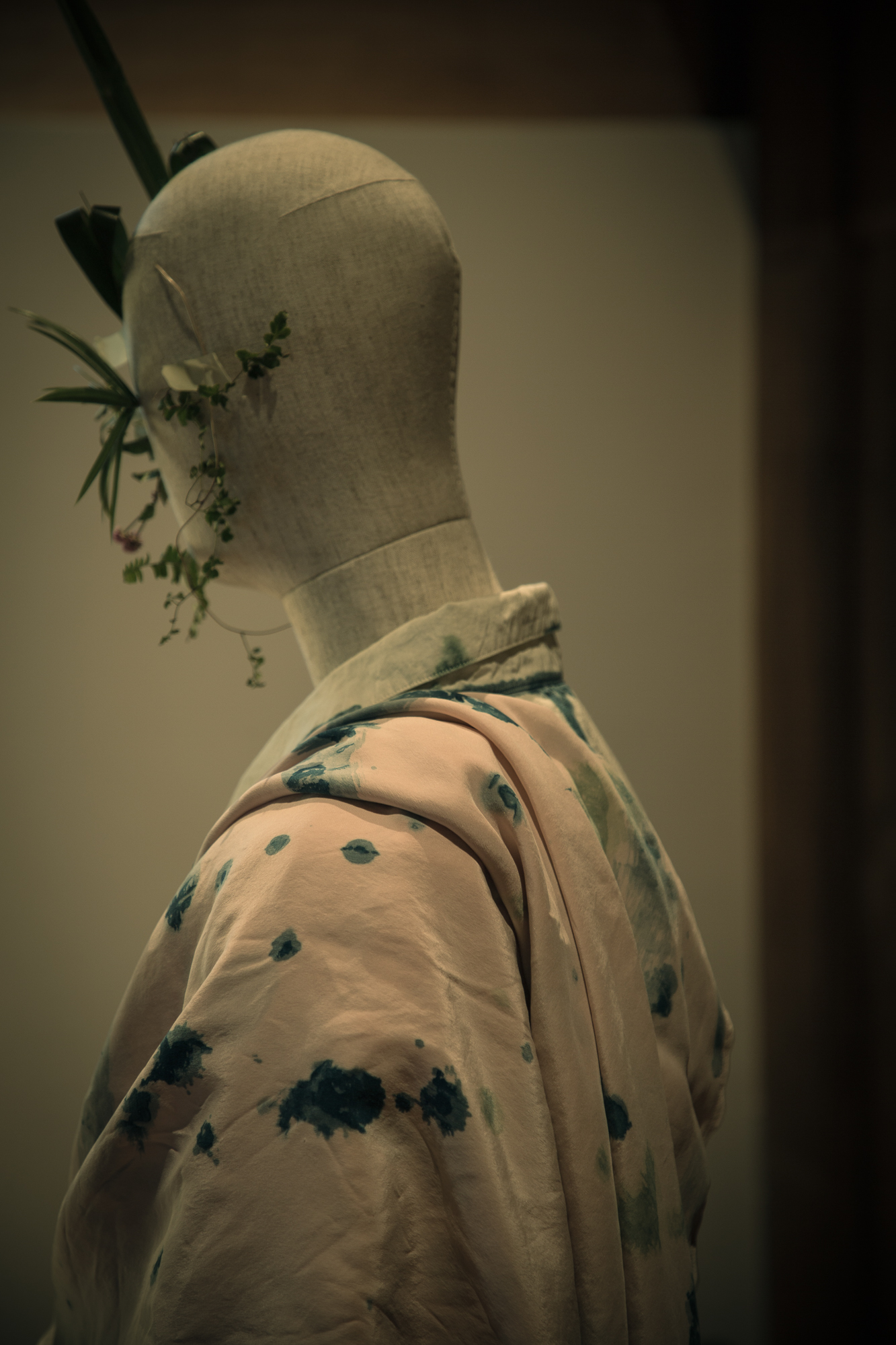
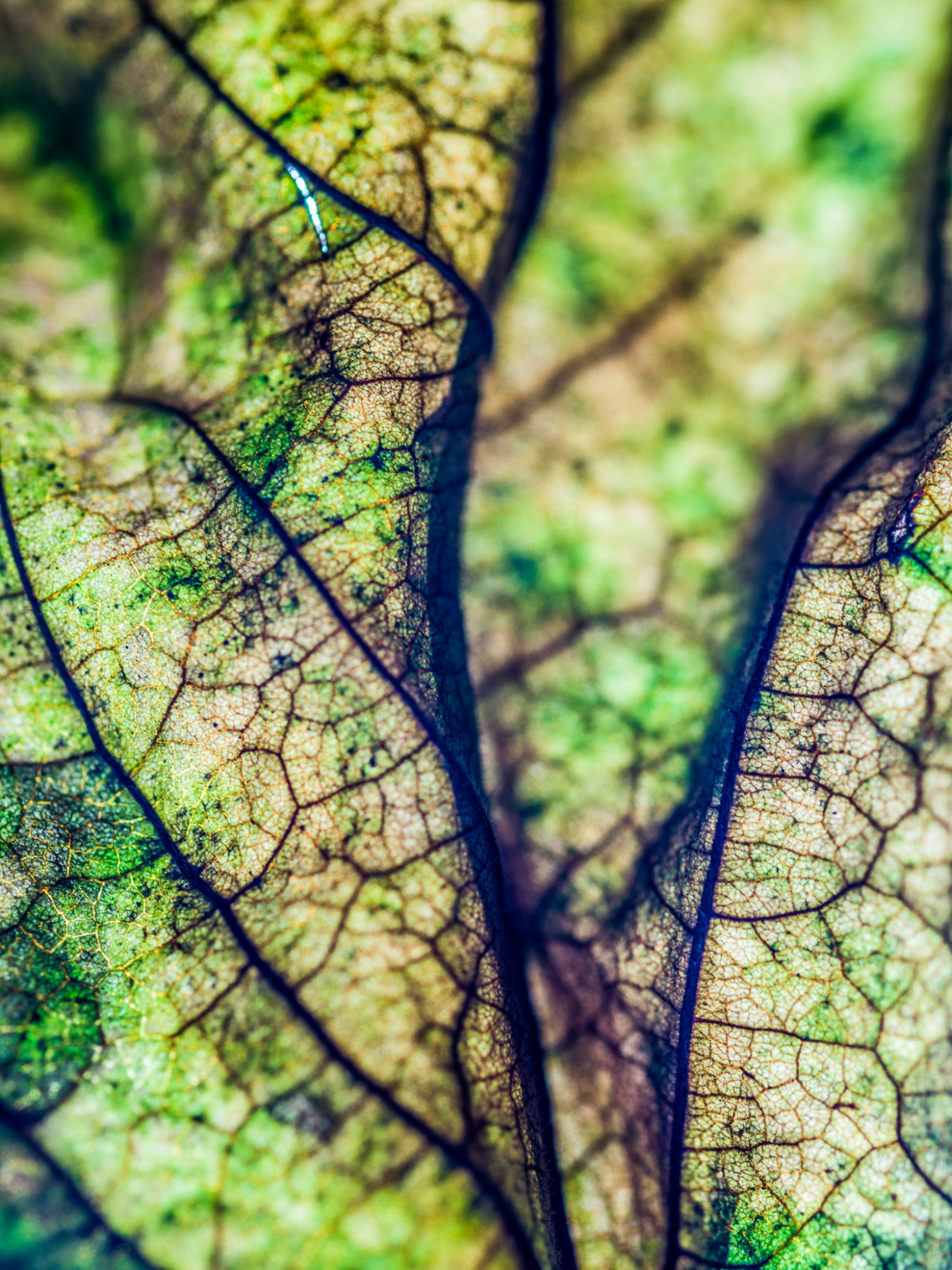
Published at: 2022-01-31


